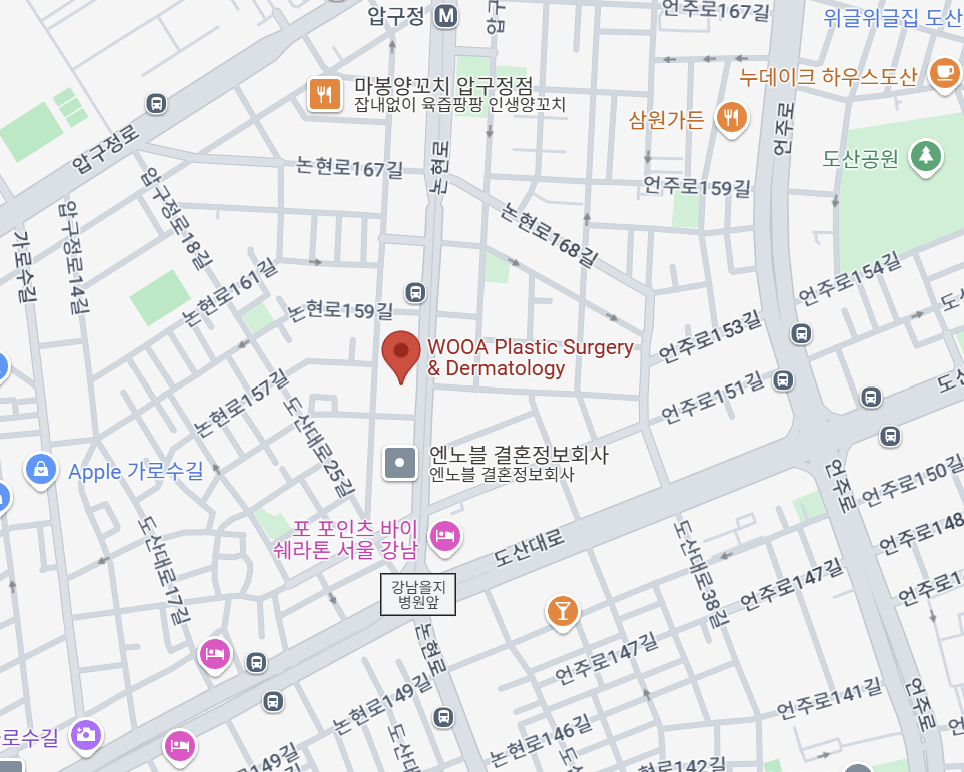Breast Reduction in Gangnam Seoul, Korea

At Wooa Plastic Surgery in Seoul, Korea, breast reduction surgery is performed by a team of highly experienced surgeons, including Dr. Woojung Kim, who has over 20 years of expertise in breast procedures. The clinic specializes in personalized breast reduction techniques designed to alleviate physical discomfort and achieve a more proportionate breast size. Using advanced methods, the surgeons ensure minimal scarring and natural results while prioritizing patient safety and satisfaction. With a reputation for excellence, Wooa Plastic Surgery is a trusted destination for both local and international patients seeking effective and life-changing breast reduction solutions.
What is a breast reduction?
Breast reduction, also known as reduction mammoplasty, is a surgical procedure designed to remove excess breast tissue, fat, and skin to achieve a smaller and more proportionate breast size. This procedure is often sought by individuals experiencing physical discomfort, such as back, neck, or shoulder pain, caused by overly large breasts. It not only helps improve physical comfort but also enhances mobility and overall quality of life. Breast reduction can also boost confidence by creating a more balanced and aesthetically pleasing appearance.
What are the differents types of breast reduction?
Traditional Breast Reduction (Anchor Technique)
This is the most common method used for patients with significant breast size and sagging. It involves three incisions: one around the areola, a vertical incision down to the breast crease, and a horizontal incision along the fold. This technique allows for extensive tissue removal and reshaping.Vertical Breast Reduction (Lollipop Technique)
Suitable for moderate reductions and less severe sagging, this technique uses two incisions: one around the areola and another vertical incision down to the breast crease. It results in less scarring compared to the anchor method while still providing effective reshaping.Liposuction-Only Reduction
Ideal for patients with good skin elasticity and minimal sagging, this less invasive approach removes excess fat through small incisions using liposuction. It is best suited for those looking for a mild reduction without significant reshaping.Donut (Periareolar) Reduction
This technique is used for patients with mild enlargement and minimal sagging. It involves a circular incision around the areola, allowing for a reduction in breast size and lifting of the nipple without extensive scarring.Free Nipple Graft Technique
Typically reserved for patients with extremely large breasts, this method involves removing and repositioning the nipple as a graft. While effective for significant reductions, it may result in a loss of nipple sensation or breastfeeding capability.
How does the procedure work?
Breast reduction surgery typically begins with a detailed consultation to determine the most suitable technique based on your breast size, desired outcomes, and body type. On the day of the procedure, general anesthesia is administered to ensure your comfort throughout the surgery.
Once you’re anesthetized, the surgeon makes precise incisions according to the chosen method (anchor, lollipop, or donut technique). Excess fat, glandular tissue, and skin are carefully removed to achieve the desired breast size and shape. The surgeon then reshapes the remaining tissue, repositions the nipples to a more natural and elevated position, and tightens the surrounding skin for a firmer appearance. Finally, the incisions are closed with sutures, and dressings or bandages are applied. In some cases, small drains may be placed temporarily to minimize fluid buildup. The procedure typically takes 2 to 4 hours, depending on the complexity.
Who are suitable candidates for breast reduction?
- Physical Discomfort: Women experiencing chronic back, neck, or shoulder pain caused by overly large breasts may benefit from breast reduction surgery. Other issues, such as skin irritation or rashes under the breasts, are also common concerns.
- Restricted Activity: Candidates include individuals whose breast size limits physical activities, such as exercise or daily movements, making them feel uncomfortable or self-conscious.
- Emotional Distress: Women who feel self-conscious or experience emotional distress due to the size of their breasts may be ideal candidates for a reduction to achieve better proportions.
- Stable Health and Weight: Suitable candidates should be in good overall health, have a stable weight, and be non-smokers to reduce the risk of complications and support proper healing.
- Realistic Expectations: Those considering breast reduction should have realistic goals for the procedure and an understanding of the recovery process and potential outcomes.
How long does it take to recover from a breast reduction?
The recovery process for breast reduction surgery typically spans several weeks, with gradual improvement over time. Here’s what to expect:
- First Week: Most patients experience swelling, soreness, and mild discomfort, which can be managed with prescribed pain medication. You may need to rest and avoid strenuous activities.
- 2–3 Weeks: Bruising and swelling start to subside, and many patients return to light activities, including desk jobs, during this time. Supportive garments, such as a surgical bra, are worn to aid healing.
- 4–6 Weeks: Strenuous physical activities and exercise can usually resume. By this stage, most swelling has reduced, and incisions are healing well.
- 3–6 Months: Final results become more apparent as residual swelling fades, and scars begin to lighten.
While recovery times vary, following your surgeon’s aftercare instructions and attending follow-up appointments is crucial to ensure optimal healing and results.
Will there be visible scars after a breast redution?
breast reduction surgery typically leaves some visible scars, but they are strategically placed to minimize their appearance. The exact location and extent of the scars depend on the technique used during the surgery. Common incision patterns include the periareolar (around the areola), vertical (down the center of the breast), or anchor-shaped (around the areola, down the breast, and along the crease).
While scars are inevitable, most will fade and become less noticeable over time. Following proper aftercare, such as keeping the incisions clean, avoiding direct sun exposure, and using scar-healing treatments, can help minimize their visibility. Over time, the scars will naturally soften and lighten, although they may not disappear completely.
How much does it cost for a breast lift in Korea?
The cost of breast reduction surgery in Korea typically ranges from $3,000 to $8,000 USD, depending on several factors. The price can vary based on the complexity of the procedure, the surgeon’s experience, the clinic’s reputation, and the specific techniques used. For example, a more complex surgery or one involving additional procedures, such as breast lifting or reshaping, may cost on the higher end of the spectrum.
We offer comprehensive packages for international patients, which may include consultations, surgery, post-operative care, and sometimes accommodation. It’s best to consult directly with a clinic to get an accurate quote based on your individual needs and treatment plan.

Breast Reduction Before and After Gallery


Schedule A Consultation In Apgujeong Gangnam
“*” indicates required fields
Location
Gangnam Office
“*” indicates required fields
- 825 nonhyeon-ro, Gangnam-gu Seoul.
- +82-10-5537-1167
- Get Directions
Office Hours
Monday: 10am – 7pm
Tuesday: 10am – 7pm
Wednesday: 10am – 7pm
Thursday: 10am – 7pm
Friday: 10am – 8:30pm
Saturday: 10am – 5pm
Sunday: Closed

